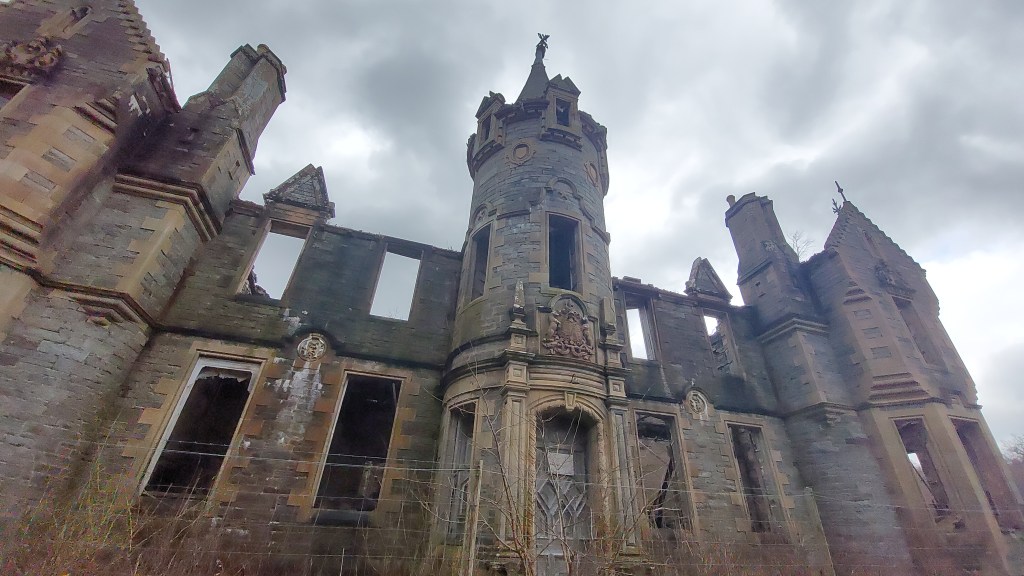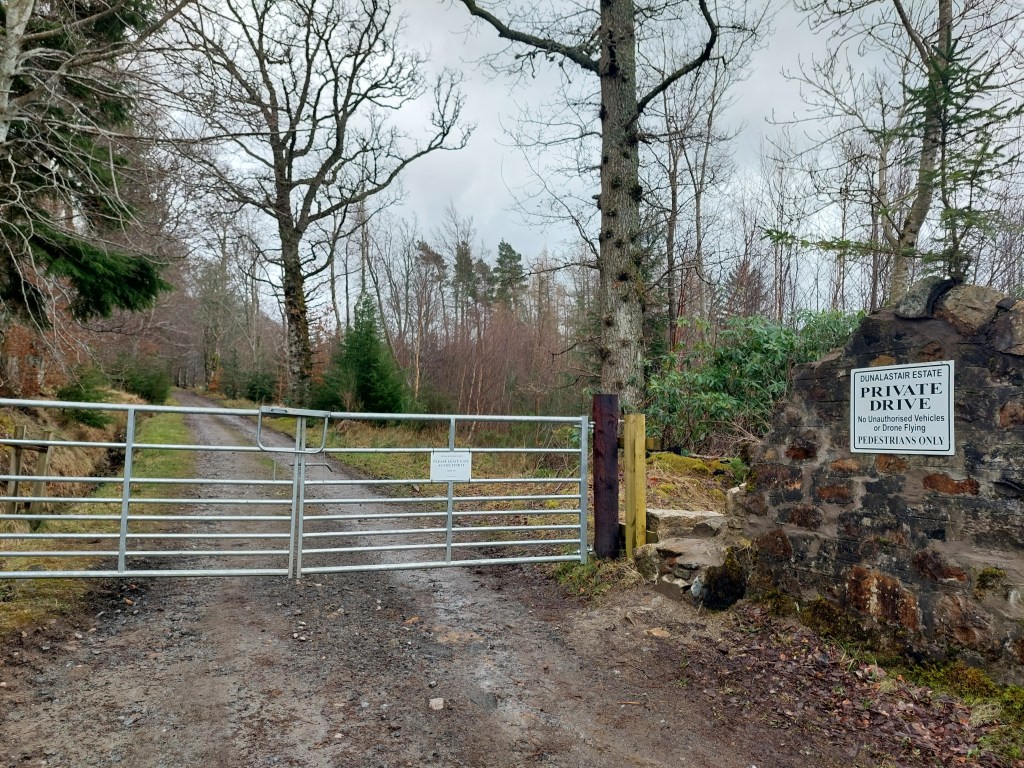Back in March, me and my family visited Scotland. My father asked me to look up some places that I really wanted to visit. I found this place on google maps and it intrigued me.
As you can see in the above pictures, the beautiful building is mostly in ruins, just an empty shell. There was an earie silence that surrounded this place, only inhabited now by creatures that take shelter under the rubble and damaged roofs.
So why is it in such a state?
Mount Alexander

Here you can see the old building, the house before Dunalastair house. Little is known of this house. This image can be seen in TH. H Shepherd’ s book “Modern Athens”. The book states that this place was named Mount Alexander by its ancestor, the poet Strowan, the 13th Chief of the Robertson clan. The principal public rooms are described in this as each being about 30 feet by 20, but little else is known of the building.
Mount Alexander
The house was only in family possession until 1745, when the 19th chief was forced into exile as we learn below.
Involvement in the Jacobite rising
The rising in the 1700’s and this house had close ties. Alexander Robertson the poet, became the chief of the family in 1688, when he was roughly 18 years old, which was just before the first Jacobite revolt. Alexander’s mother in Carie actually wrote to his uncle for help in dissuading him from joining this rebellion. Did that work? No. Alexander spent time in exile between 1690 and 1703 for the first time and then again between 1715-1726. Alexander, on his return aided the Jacobites in 1745 and led 140 men until he realised he was too old for war. Unfortunately he still paid the price because his house was still burnt down that same year, along with Carie and another of his houses.
Alexander only rebuilt Carie and hid there until he died in 1749, roughly aged 70-85 years old!
To learn more about his life, click this link!
General Sir John Macdonald of Dalchosnie
This General took over the house in 1853 when George Duncan Robertson sold the house, the chief of the Robertsons in 1853 . Sir John tore down the house that was there and had this house that is now in ruins, built.

Unknown – Original publication: Building News Immediate source: http://www.scottisharchitects.org.uk/architect_full.php?id=201086, Fair use, https://en.wikipedia.org/w/index.php?curid=68837495
The man above is the architect who designed the house, Andrew Heiton and it is dated 1852.
“It consists of a large baronial mansion with a central round tower containing the main entrance door, and wings extending to the rear enclosing a central courtyard. It was occupied until 1952 and then abandoned; the owner is reported to have said that he would like to see the building restored, although this is going to be difficult to achieve since he is also reported as not wanting to see parts of the estate subject to adverse development (i.e not able to be converted to flats or a hotel) and would probably want to limit the amount of land to be sold with the house. The majority of the roof has collapsed and the first floor joists are in a perilous condition as well” – The Castle Guy
Second World War
After World War I there were insufficient staff available to run the house and estate. Then in the second world war, the house was requisitioned as a Polish Boys’ school and then a girls’ school. Unfortunately the house was damaged in this time and there was even a fire in the drawing room! This meant the loss of a Millias painting.
Not much more is known about this house other than this.
I am no historian, only a person with an interest and love for history. I have tried to make sure that the information I have given is correct and the most updated information I could find. If you do find any errors, please message me at talithatullochsstravels@gmail.com. Thank you







Leave a comment